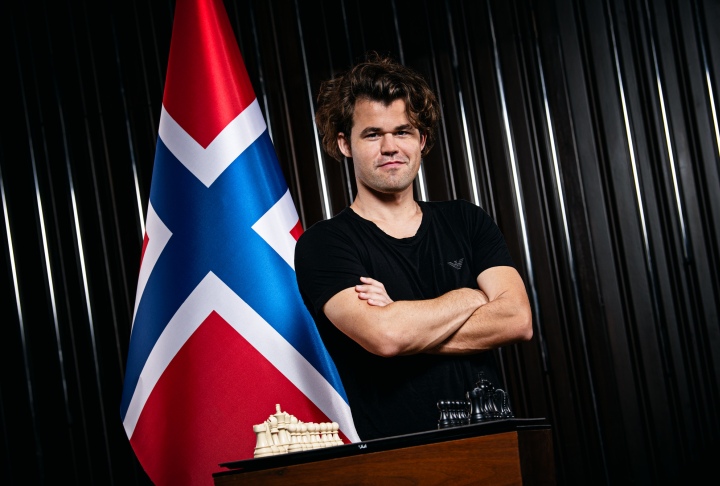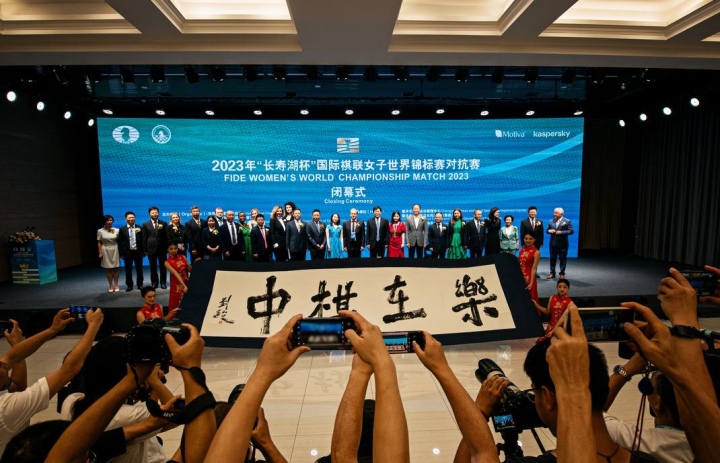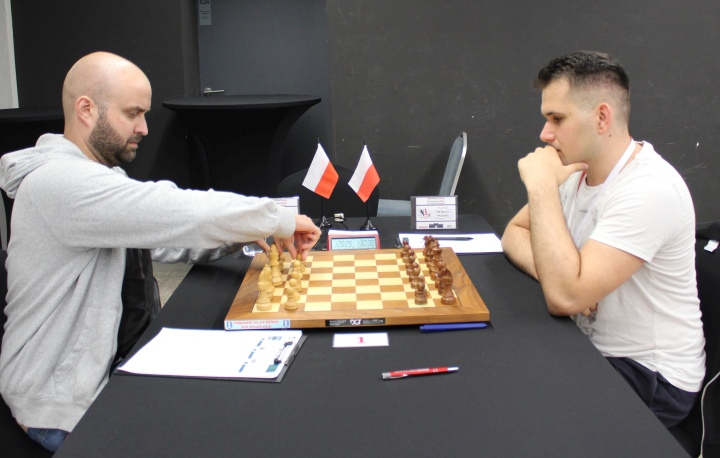Magnus Carlsen secures first World Cup victory

Former World Champion Magnus Carlsen has accomplished a significant milestone in his illustrious chess career by capturing his inaugural World Cup title, the only tournament that was missing from his immense collection of victories All three top-placed players have qualified for the 2024 Candidates tournament which is due to take place next April in Canada. If Carlsen officially declines to take part – he has hinted in the interviews that he might not be interested in playing in the event – then Nijat Abasov, who finished fourth, will replace him. After a quiet draw in the second game of the finals, Carlsen – who is recovering from food poisoning – defeated the 18-year-old Indian prodigy R Praggnanandhaa in the tiebreaks. It took just two tiebreak games and about one and a half hours. Crucial was the first rapid tiebreaker which Carlsen won with black pieces. The two sides were evenly matched in the Giuoco Piano. Prag organised an attack on the black king but misplayed in the process. Still, the position was even. In an open and sharp endgame, where both sides had to calculate very carefully, Prag landed in time trouble and blundered with move 42.a6. While Carlsen did not respond in the best fashion, Prag continued to err in the next two moves and after his 44th move, White was completely lost. On move 47, Prag resigned. Game two was much quieter with Carlsen (playing as White) forcing exchanges in a better position. A draw was agreed as early as move 22, securing first place for the Norwegian. The World Cup is the only major event that Magnus Carlsen hadn’t won in his career. The closest he came was in 2021 when he finished third. Now, with this feather added to his cap, the world’s highest-rated player proved that he is the ultimate force majeure of chess. The match for third place finished with Fabiano Caruana’s victory. After losing in game one of the regular match, Caruana made a comeback in a complicated and tough game on day two and reached the tiebreaks. Nijat Abasov – the Azeri star who surprised everyone with his exceptional performance in his native Baku – broke in the rapid, losing both tiebreak games. First, Caruana defeated Abasov with the black pieces in the Trompowsky Attack. Gaining the initiative in the early stages of the game, Caruana gradually increased the pressure and by move 22 Black was on the verge of victory. White’s king finally ended up in a mating net where he could only delay the inevitable for a bit, but nothing more. Reinvigorated by two consecutive victories, Caruana pressed on in the second game as well, this time with the added advantage of white pieces. Abasov opted for the Sicilian but Caruana again played sharply and fiercely, creating a better position early on. By move 15, White was winning. A great outcome for Caruana who seemed to be faltering after being knocked out by Praggnanandhaa in the semis and losing the first game to Abasov. All in all, this was a sweet and short day for the initial tournament favourites – Caruana and Carlsen. Text: Milan Dinic Photo: Stev Bonhage About the event The FIDE World Cup 2023 is taking place from 29 July to 25 August 2023 in Baku, Azerbaijan. In the Open tournament, 206 players were eligible to take part and 103 in the Women’s event. There will be eight rounds in the Open and seven in the Women’s tournament. Each round will be played under a knock-out system, consisting of a 2-game match. In the case of a tie, the players will play a rapid and, if necessary, a blitz tiebreak until the winner is determined. The winners of the top three places in both sections will qualify for the 2024 Candidates tournament. In both events, the time control for each game is 90 minutes for the first 40 moves, followed by 30 minutes for the rest of the game with an increment of 30 seconds per move starting from move 1. The prize fund for the entire event is 2.5 million US Dollars, with $1,834,000 in the Open and $676,250 in the Women’s tournament. The 2023 FIDE World Cup has the largest prize fund for any chess tournament ever played. More information about the event: worldcup2023.fide.com/ Regulations: Open tournament: handbook.fide.com/files/handbook/WorldCup2023Regulations.pdf Women’s event: handbook.fide.com/files/handbook/WWorldCup2023Regulations.pdf Schedule: worldcup2023.fide.com/schedule
Ju Wenjun crowned with her fourth WC title: “There are many memorable moments, and this is one of them”

The great chess spectacle to determine the Women’s World Chess Champion came to a poignant end in Chongqing with a lively pageant of Chinese culture The closing ceremony of the Women’s World Championship match was held at the grand hall of the Changshou District Office Service Centre – the same venue where just two days earlier, Ju Wenjun defeated challenger Lei Tingjie in the crucial 12th game of the match. The ceremony began with a mesmerizing performance by the Chongqing Opera Troupe, showcasing the exquisite landscapes and kindness of the Changshou District, situated in central China along the historic Yangtze River. Following this, the local sports team demonstrated the art of Kung Fu, hailing from the esteemed Wushu Sports Centre, renowned for its deep-rooted history in traditional Chinese culture. The last theatrical act featured a Tea Ceremony Performance dubbed Happy in Chess. Combining the tea ceremony, calligraphy, dance and chess, the show depicted the richness and splendour of the world’s civilization in different art forms. As the event moved into its official segment, Chief Arbiter Anastasia Sorokina appeared on stage to confirm the results of the match – a 6.5:5.5 victory for Ju Wenjun. Dai Ming, deputy party Secretary of Changshou district and host of the ceremony addressed the crowd first. “Shanghai and Chongqing witnessed the match where the New Queen was determined. We have witnessed not only top-notch chess by players but also the sportsmanship of China! Congratulations to both players who have won the hearts of fans with their dignity”, Dai said, adding that the players helped “build an image of China as a sports country and a healthy country”. Zhu Guoping, director of the National Mind Sports Centre, highlighted the rise of chess’s popularity in China and the prowess of Chinese players on the global stage. Zhu congratulated Ju Wenjun on her exceptional achievement, emphasizing how her victory required not only exceptional chess skills but also a strong character to overcome the challenges. The appearance of FIDE President Arkady Dvorkovich on stage marked the beginning of the key moment of the ceremony. Dvorkovich lauded the event in China, saying it “was a huge success” and pointed out that “the young generation in China have great role models, not only the new champion but all the other great women chess players”. Of all the 17 women world champions so far, as many as six come from China, while the country now holds a crown in the absolute section, with Ding Liren winning the world match in April. “Congratulations on harnessing and preserving the tradition of chess! The whole world was following, and you moved chess forward to a new level where the rest will have to follow”, Dvorkovich concluded. After the runner-up, Lei Tingjie came up to the podium, it was time for the Champion to appear. With fanfare and roaring applause in the background, Ju Wenjun stepped onstage. Wearing a bright red dress – in the colour of the Chinese national flag – the four-time Women’s World Championship winner had a crown placed on her head and was awarded a trophy and a golden medal. In a brief humbling speech, Ju thanked “my country, all the officials and organizers, the team and family” for their support. “There are many memorable moments, and this is one of them”, said the World Champion. By winning the World Championship match, Ju has equalled the score set by her compatriot Hou Yifan and is on a path to equalling the record of a 5-time victory set by the legendary Nona Gaprindashvili and Maia Chiburdanidze. Text: Milan Dinic Photos: Stev Bonhage Official website: womenworldchampionship.fide.com/ About the Match The match took place in two Chinese cities, where each of the contestants comes from. The first half of the match was in Shanghai, while the second half took place in Chongqing. The match consisted of 12 games of classical chess. The payers had 90 minutes for the first 40 moves, followed by 30 more minutes for the rest of the game, plus a 30-second increment per move starting on move one. Players cannot offer a draw before they reach the 41st move. In case of a tie, there were the following tiebreaks: Four games with a 25+10 time control. Two games with a 5+3 time control. Two more games with a 5+3 time control. One game with a 3+2 time control, until a winner is determined. The prize fund is €500,000, with €300,000 going to the winner and the remaining €200,000 to the runner-up. If the outcome of the match is decided upon tiebreaks, the winner took €275,000, while the runner-up received €225,000.
FIDE World Junior U20 Championship: Registration deadline extended

FIDE and the Mexican Chess Federation have extended the registration period for the participants of the World Junior U20 Championship. The tournament will take place from September 20 to October 2, 2023 in Mexico City, Mexico. FIDE member Federations should send the information and the corresponding payments for their players before September 8, 2023. The same date, September 8, also applies to Mexican players who are willing to register. The official email: juniorchampionship2023@fide.com Each National Federation can enter one player born on or after January 1, 2003 in each of two categories – Open and Girls, with a maximum of two invited players and send as many additional players as they wish. Official website: juniorchampionship2023.fide.com Regulations and invitation letter (pdf)
5th FIDE World Championship for People with Disabilities crosses midpoint

The participants of the 5th FIDE World Championship for People with Disabilities have passed the halfway mark. In the fifth round, two Polish players faced each other on the first board. FM Marcin Molenda was leading the tournament with a perfect score of 4/4 points, while his opponent, GM Marcin Tazbir, was trailing by a half-point (pictured above). Tazbir emerged victorious in this clash, thus dethroning Molenda from the top position. The battle was intense from the very beginning, but a tactical oversight by Molenda in the middlegame allowed his opponent to quickly secure a winning position. Tazbir, Marcin – Molenda, Marcin The position is roughly equal. White has more space on the board, his pieces are better coordinated, and the c5 pawn is very strong. However, Black possesses a bishop pair, and the correct idea would be activating the light-squared one by 18…Bc6= or 18…b5= (18…b6). Molenda, however, decided to attack the d3-pawn straight away and played 18…Bb5??. Unfortunately for him, it is a huge blunder, as after 19.Nd6!+- Black can’t protect his pieces. The game continued with 19…Nxd3 (19…Bxd3 20.Qxe5+-; 19…Bxd6 20.cxd6 Qxd6 21.Qxe5+-) 20.Nxb5 Nxe1 21.Qxe1 Qd7 22.a4. White has two light pieces for a rook and a pawn, but because of black’s passiveness and weak structure, Marcin had little problem converting the advantage. The rest of the game was a smooth sail for White: 22…Bd8 23.Nc4 Be7 24.Ne5 Qe8 25.c6! bxc6 26.Bxc6 Bb4 27.Bxe8 Bxe1 28.Bxf7+ Rxf7 29.Nxf7 Bxf2 30.Kxf2 Kxf7 31.Kf3 Black resigned. 1-0 After this win Marcin Tazbir is leading the field (4.5/5 points), followed by four players on 4/5: IM Lukasz Nowak (Poland), FM Marcin Molenda (Poland), and IM Daniel Pulvett. Emilia Egeman of Poland (pictured above) tops the women’s standings (3/5 points). In Round 5, The 17-year-old defeated a higher-rated Ukrainian opponent Oleksii Filippskikh with a beautiful tactical strike, shattering the defense around the opponent’s king. FIlippskikh, Oleksii – Egeman, Emilia 26…Rxe4!!-+ 27.Ne6 (27.Bxe4 was objectively the best option for White but after 27…Qh3 White has to give up her queen: 28.Qxd2 Bxd2 29.Bg2 (29.Rb3 Qg4) Qg4 30.Ra4 b5 and Black emerges with an extra piece) Ree2 28.Rf6 Rxg2+ 29.Kf1 Bg7 30.Rfb4?? Qb5+ 0-1 The special guest of the fourth round was FIDE Secretary General Łukasz Turlej. He made the first ceremonial move on the top board. FIDE Secretary General Lukasz Turlej makes the first move on the top board FM Marcin Molenda – IM Lukasz Nowak In the sixth round of the tournament, the sole leader, GM Marcin Tazbir, will take on Nikolay Mukha from Ukraine with Black. On the second board, two International Masters will face each other: Daniel Pulvett from Spain will try to make good use of the white pieces against Lukasz Nowak from Poland. The upcoming rounds will be decisive in determining the champions and the medalists.
Aleksandra Goryachkina: “I try to imitate Alexandra Kosteniuk in knockouts”

FIDE PR Officer Anna Volkova spoke with the 2023 FIDE Women’s World Cup winner soon after her triumph. You can watch the video version of the interview on our YouTube channel in Russian with English subtitles. Photos by Stev Bonhage. – We are joined by Aleksandra Goryachkina, winner of the 2023 FIDE Women’s World Cup. Aleksandra, congratulations on this success. Your career has seen many tournament victories, including national championships and the Candidates Tournament. At the last World Cup, you took second place. How do you feel after this victory? How difficult was it? – Thank you. Knockouts, in general, are never easy. The final was quite challenging. Until then I played smoothly and confidently. Then I became nervous because I hadn’t won the final yet, and this is where the problems started. – You played the first three rounds confidently, without any tie-breaks: winning with White and making draws with Black. Tell us about this stage of the event; how confident did you feel, did you manage to catch the momentum, or were the opponents not so tough? – Since I have a high rating, I played with lower-rated opponents and in the first three rounds, the opposition was not the strongest. I could have scored even more points, but I reached my main goal, and it was enough. – If we talk about some turning points, the tie-break with Harika was quite long, tiring and tense. Was it the most difficult match of the tournament? – The hardest match was probably the final. The match with Harika was also very difficult: she is quite a strong opponent, and she was very motivated. I already have my spot in the candidates; she wanted to get it, too. Perhaps, for her, it would have been better if she was paired with some other opponent. But these things happen. We played two fairly even draws in the classical games; I had almost no chance there. But in the tie-break, I won the first game with Black. I can’t say I deserved it because she dropped a piece in one move. But then I lost the second game unexpectedly with White; it was one-way traffic. She played an excellent game, of course. I decided to stabilise the situation a little bit, and we played two draws again. Then in blitz, I won the first game again with Black, and in the second game with White, I already knew the trick. I pulled myself together and survived. – The final also seemed quite dramatic: not everything was going smoothly for you. Tell us about it. – To be honest, I didn’t arrive at the final in the best condition. I had some health problems, which unsettled me a bit. All the games in the final were topsy-turvy. But I was lucky somehow. I’m glad I managed to achieve a good result. – If we talk about your recent major victories – a win in the Grand Prix series and this tournament, and speaking about the formats of chess tournaments, where do you feel more comfortable, playing Swiss or knockout events? – I didn’t win the whole Grand Prix series, just one stage, and I finished second to Lagno. Which format is better? Whichever you win, I guess. – Who helped you at this tournament? Who supported you? We saw your father, and we saw some fans who came specifically to your games. Can you tell us about your support and its visibility and necessity at this kind of tournament? – The support was purely moral – my dad and the fans. Of course, it was unexpected that they would cheer for me so much. Speaking of coaching, it was a challenge. Nobody helped me, and it is certainly not easy in knockout events. – How do you manage to cope with physical fatigue in general? After all, the tournament lasted for almost a month, and your opponents are the strongest women chess players in the world. – Perhaps, one should try to avoid playing tie-breaks because they take up a lot of energy. If you rest at those moments, you can recover, prepare a bit, sleep, and, in general, it goes easier afterwards. In one of my interviews, I have already mentioned that I try to imitate Alexandra Kosteniuk in knockouts; she won the knockout World Championship and the first World Cup. She won both without tie-breaks if I remember correctly. That’s what you call a top-level! – A final question is about your plans. What tournaments are coming up for you? What goals do you set for yourself? – I think I will play the Grand Swiss and the Rapid & Blitz World Championship at the end of the year. I will try to perform as well as I possibly can. – Thank you very much. Congratulations again. New victories! – Thank you.

